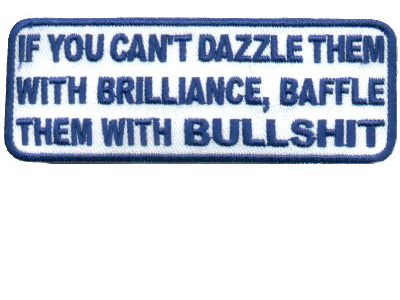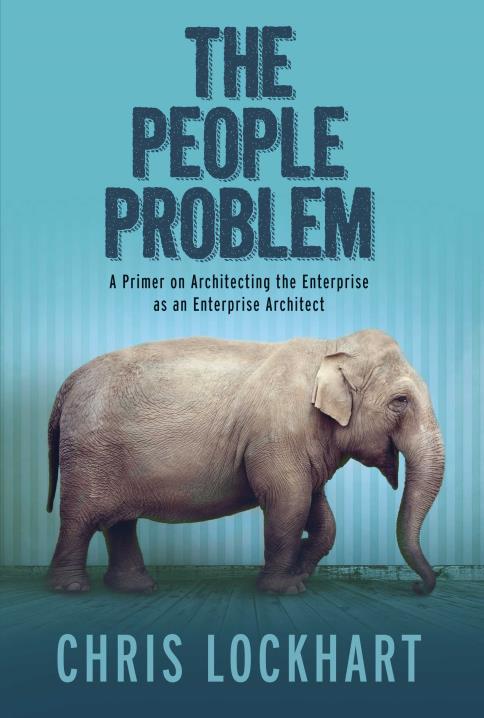I recently read an article that touched so many nerves it spawned a whole subject area on the blogger’s site. The basic premise was just how ridiculous some of the thinking and positioning around social media had become. This is something that may seem obvious to many, but is also apparently blasphemy to many others.
This immediately stuck me as being particularly relevant not just to IT in general, but architecture and strategy specifically. I think this is primarily because any field or topic associated with or practiced by consultants is rather susceptible to using ridiculous language and outright hyperbole from time to time.
Some Call it Horseshit
At the root of many things that seem ridiculous is some amount of bullshit, in one way or another. People say things they don’t mean, mean things they don’t say, say things that they think mean one thing but really mean another thing, and inevitably spew great quantities of nonsense when they know they don’t know what they are saying. I happen to think most of that is just human. To me what is more unforgiveable is the propensity of some to just… continue… talking. There’s being polite and responding when asked something. Then there’s the “I need to demonstrate how smart I am on this topic by just churning out paragraphs of unnecessary crap” situation. Unnecessary text is often full of bullshit that makes liberal use of hyperbole, simile, made-up corporate doubletalk, self-promotion, consultantistic jargon and an undeserved importance.
For examples of this, look no further than LinkedIn on a given day, or your own company email correspondence. There is a lot of talking going on with very little being said. The result is that many topics worthy of discussion (i.e. social media strategy) become laughably shallow, the domain of sales folks and self-promoting consultants with paper-thin or meaningless credentials.
I was in the midst of thinking through some more examples of how this affliction manifests itself within companies (and the resulting damage) when I was hit with an email request for a reference model for a particular project. The email text went below-the-fold in Outlook, in other words, I had to scroll. Besides making the point of unnecessary words, the request itself made me think about whether it was a valid ask. Instead of immediately getting to work on a reference model, I began to think about it was really necessary for us to model everything? Doesn’t it become a bit overdone at some point? I mean, frameworks, models, models of models and meta-models? Really? Why is IT engaged in a rush to model ourselves to death? Does this type of overdone, over-described, over-sold activity ultimately deliver any value to a company? Does it instead actively damage the worth of a well-done, concise version of the activity? Does this type of work, at some point, just become an example of carefully worded nonsense?
I found my example, or rather, it found me by way of the overly wordy email.
To Model or Not to Model
The Twitterwebs were all abuzz while I was thinking about this topic. Apparently there was some conference someplace with plenty of folks tweeting away. The ephemeral stream of wisdom included things such as “What’s the next big thing in EA” and “The need for better BPM models in EA”. Meanwhile I was being bombarded by emails from a colleague with model frameworks that we might potentially use for a project.
To be honest, I’ve had it with models.
A model is useful if it describes something in a context that renders a complex topic easier to digest for specific audience. Its purpose is to describe, to communicate. It is an expression of a viewpoint. It isn’t a detailed map or a blueprint. It is representative of a system, it doesn’t depict the system. It is an abstraction.
I’m afraid we model too frequently as a cover for not actually producing things of value. Maybe I’m being cynical again (there I go…!). I am merely observing, looking around at my field and taking note of the sheer number and variety of ways to describe essentially the same things. I’d be more impressed if someone presented their model and showed explicitly how it was used in a context that generated some sort of value (i.e. dollars). Haven’t seen that yet. In fact, I know folks who’ve been modeling the same system for over a year and I have yet to actually see any results from their work! I’m beginning to suspect this is much more common than I had already thought it was.
I recently had to endure a presentation on the latest model of Business Process Management within a particular enterprise. Whereas I had proposed an approach that utilized exactly one slide with one set of graphics communicating one model, I was faced with an onslaught of thirty-two slides describing the counter-proposal. Each slide was essentially the same perspective, through a different lens. In one case, the model on one slide was literally the same model as on another, but this time it was ‘vertical’ instead of ‘horizontal’. Seriously?
At the end of that presentation, it became clear that the team of architects had spent two weeks working on models of the BPM approach instead of actually thinking through the BPM approach. From their enthusiasm and recommendation that we follow-up with alternate views, I have come to the conclusion that they preferred to model the solution rather than actually work on the solution.
Look Into the Orb
Carefully worded nonsense is a powerful drug. It deludes people and lulls them into a false sense of security. It offers complexity of language as a salve for known unknowns. It makes people feel good about that thing that no one really understands. It hypnotizes people into thinking things are okay or will be okay. Imagine the slick car salesman discussing intricate details of the internal combustion engine he really knows nothing about, or Charlie Brown’s teacher droning on, or the beturbaned wizard with a glowing magic ball asking you to trust him as he spews meaningless babble. The negative impact of this sort of crap upon a company is profound. And while it matters whether the bullshit source is external consultants or internal staff, the resulting negative effect is only different by degrees (although the remedy may be very different). The damage that bullshit can do is immense:
- Bullshit provides the false confidence that skills exist to execute a program
- Bullshit promises a speed to market that can never plausibly be accomplished
- Bullshit implies there are fewer problems or problems of lesser severity than there really are
- Bullshit confuses people
- Bullshit wastes time
- Bullshit drives the good talent away
- Bullshit prevents clear understanding of mission, vision, goals and objectives
- Bullshit obscures roles and responsibilities
- Bullshit sows dissension in the org model
- Bullshit proffers false specificity and artificial precision
Bullshit, in short, costs a company a shit-ton of money.
Avoidance As An Antidote (AAAA)
The power of carefully worded nonsense can be mitigated, however. The objective is to prevent the nonsense from being disseminated in the first place. While this approach probably has an effectiveness rate somewhere north of 0% and south of 100% it can only ever be as effective as the people involved. And that, my friend, can only start with you.
The first step is to only say things when you absolutely need to say something in order to either a) respond to something directly asked of you or b) to be polite and affirm receipt of some kind of knowledge or c) to impart an important bit of knowledge to someone else. Stop talking so much. You don’t have to respond to every text message or email or Facebook post or Tweet. You don’t have to offer your opinion or feelings or thoughts on every damn thing you see. Quit oversharing. Nobody cares.
The second step is when you absolutely need to say something, be concise. Smart people can convey a bit of knowledge in fewer words than dumb people. Brevity suggests you know your subject and aren’t faking-it-till-you-make-it. Don’t be dumb. Dumb doesn’t win.
The third step is when you absolutely need to say something, and you are going to say it in a concise manner, be clear. Don’t use jargon or made-up words. Use Latinate prose when communicating abstract ideas. Use Anglo-Saxon prose for concrete actionable items. Know the audience. Be understood.
Three steps. Easy. Avoid being talkative and oversharing, avoid being wordy and dumb sounding, avoid being complex and misunderstood. If we each practiced this antidote to bullshit I submit the world will be a better place.
p.s. the astute reader will notice I have a spotty record observing these rules


